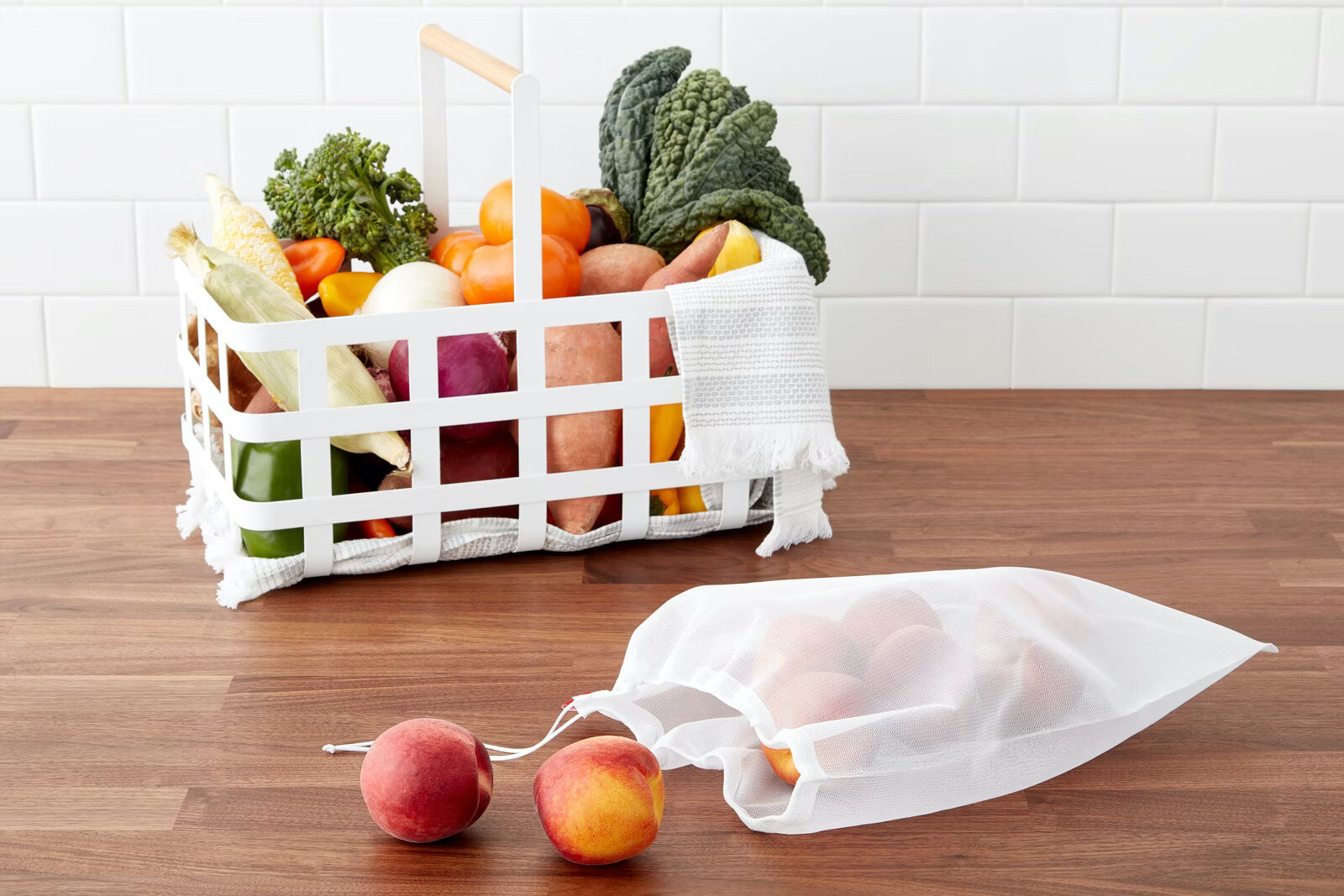

Articles
How To Store Fruits And Veggies
Modified: January 23, 2024
Learn how to store fruits and veggies properly to keep them fresh and maximize their shelf life. Our articles provide helpful tips and techniques for storing different types of produce.
(Many of the links in this article redirect to a specific reviewed product. Your purchase of these products through affiliate links helps to generate commission for Storables.com, at no extra cost. Learn more)
Introduction
Welcome to the world of fruits and vegetables! As we all know, these nutritious and delicious staples are an essential part of a healthy diet. But what happens when we bring them home from the grocery store or farmers market? Without proper storage techniques, our beloved fruits and veggies can quickly lose their freshness, flavor, and nutrients.
Proper storage is essential to maximize the shelf life of fruits and vegetables, keeping them fresh and tasty for as long as possible. By following a few simple guidelines, you can ensure that your produce stays at its peak and minimize food waste.
In this article, we will explore the importance of proper storage and provide you with valuable tips and techniques for storing different types of fruits and vegetables. Whether you’re a seasoned home cook or a novice in the kitchen, this comprehensive guide will help you make the most of your produce and minimize waste.
Key Takeaways:
- Proper storage of fruits and vegetables is essential for maintaining freshness, maximizing shelf life, and reducing food waste. By following specific guidelines, you can preserve flavor, texture, and nutritional value.
- Handle fruits and vegetables with care, remove spoiled pieces, and provide proper airflow and moisture control during storage. Regularly check for spoilage and consider blanching, freezing, or preserving excess produce to extend usability and reduce food waste.
Read more: How To Store Veggies And Fruits
Importance of proper storage
Proper storage of fruits and vegetables is vital for several reasons:
- Preserving freshness: Proper storage techniques help to maintain the freshness and taste of fruits and vegetables. By keeping them in optimal conditions, you can extend their shelf life and enjoy them at their best.
- Minimizing waste: Inadequate storage can lead to premature spoilage and decay, resulting in unnecessary food waste. By storing your produce correctly, you can reduce the amount of food that ends up in the trash.
- Retaining nutrients: Fruits and vegetables are packed with essential vitamins, minerals, and antioxidants. However, improper storage can cause nutrient loss over time. By choosing the right storage methods, you can help preserve the valuable nutrients in your produce.
- Saving money: When your fruits and vegetables stay fresh for longer, you don’t need to replace them as frequently. This can help you save money on groceries and make the most of your food budget.
Now that we understand the importance of proper storage, let’s dive into some general tips that apply to storing all types of fruits and vegetables.
Importance of Proper Storage
Proper storage is crucial for maintaining the quality and freshness of fruits and vegetables. When produce is stored incorrectly, it can quickly lose its flavor, texture, and nutritional value. By understanding the importance of proper storage, you can make the most of your fruits and vegetables and reduce food waste.
One of the main reasons to store fruits and vegetables properly is to preserve their freshness. Many fruits continue to ripen after they are harvested, and vegetables can lose moisture and become limp if not stored correctly. By following the right storage techniques, you can slow down the ripening process of fruits and vegetables, keeping them fresh for longer.
In addition to maintaining freshness, proper storage also helps to retain the nutritional content of fruits and vegetables. Fruits and vegetables are rich in vitamins, minerals, and antioxidants, which are essential for good health. However, exposure to air, light, and heat can cause the breakdown of these nutrients. By storing produce in the right conditions, you can minimize nutrient loss and maximize the health benefits of your food.
Another crucial aspect of proper storage is minimizing food waste. When fruits and vegetables spoil prematurely, they end up in the trash, leading to unnecessary waste and financial loss. By storing produce correctly, you can prolong its shelf life, reducing the chances of spoilage and allowing you to enjoy it before it goes bad.
Proper storage also helps to save money on grocery bills. When fruits and vegetables last longer, you don’t need to replenish your stock as frequently. This can result in significant savings over time and allow you to make the most of your food budget.
Furthermore, storing fruits and vegetables properly can contribute to a more sustainable lifestyle. Food waste has a significant impact on the environment, from the resources used to produce and transport the food to the emissions generated when it decomposes in a landfill. By minimizing food waste through proper storage, we can help reduce our carbon footprint and promote a more sustainable future.
Now that we understand the importance of proper storage, let’s explore some general tips that apply to storing all types of fruits and vegetables.
General Tips for Storing Fruits and Vegetables
When it comes to storing fruits and vegetables, there are some general guidelines that apply to most types. By following these tips, you can help extend the shelf life and maintain the quality of your produce:
- Separate ethylene-producing fruits: Some fruits, such as bananas, apples, and tomatoes, produce a natural gas called ethylene as they ripen. Ethylene can accelerate the ripening process of other fruits and vegetables. To prevent premature spoilage, store ethylene-producing fruits separately from ethylene-sensitive produce, such as leafy greens and berries.
- Handle with care: Fruits and vegetables can be delicate and easily bruised. Handle them gently to avoid any damage that could lead to spoilage.
- Remove any damaged pieces: Before storing your produce, inspect it for any signs of damage or spoilage. Remove any bruised or rotting pieces to prevent them from contaminating the rest of the fruits or vegetables.
- Keep them dry: Moisture can cause fruits and vegetables to deteriorate quickly. Make sure your produce is dry before storing it and avoid washing it until right before use.
- Avoid direct sunlight: Exposure to direct sunlight can speed up the ripening process and cause produce to spoil faster. Store your fruits and vegetables in a cool, dark place to preserve their freshness.
- Use breathable containers: Opt for storing fruits and vegetables in breathable containers, such as mesh bags or perforated plastic bags. This allows for proper airflow and prevents excess moisture buildup.
- Don’t overcrowd: Overcrowding fruits and vegetables can lead to increased moisture and ethylene buildup, promoting spoilage. Ensure there is enough space between your produce items to allow for proper air circulation.
- Store onions and potatoes separately: Onions and potatoes should be kept separate, as they can cause each other to spoil faster. Store onions in a cool, dry place, while potatoes need a slightly warmer environment.
- Check regularly: Check on your stored produce regularly to identify any signs of spoilage or rot. Remove any affected items promptly to prevent further contamination.
By following these general tips, you can create an optimal storage environment for your fruits and vegetables. However, it’s important to note that different types of produce have specific storage requirements. In the following sections, we will delve into the best practices for storing various fruits, vegetables, herbs, and more.
Storing Fruits
Fruits come in a wide variety of shapes, sizes, and textures, each with its own unique storage requirements. Here are some general tips for storing different types of fruits:
- Citrus fruits: Citrus fruits such as oranges, lemons, and limes can be stored at room temperature for up to a week. However, they have a longer shelf life when refrigerated. Keep them in the refrigerator in a breathable bag or container to maintain their freshness.
- Apples: Apples can be stored in the refrigerator, where they can last for several weeks. However, if you prefer to store them at room temperature, keep them in a cool, dark place away from sunlight and other fruits.
- Berries: Berries are delicate and perishable, so it’s best to store them in the refrigerator. Before storing, remove any spoiled or crushed berries. To help extend their shelf life, you can also rinse them with a mixture of water and vinegar, which helps prevent mold growth.
- Stone fruits: Stone fruits like peaches, plums, and cherries should be stored at room temperature until they are ripe. Once they reach the desired ripeness, you can transfer them to the refrigerator to slow down the ripening process and extend their shelf life.
- Bananas: Bananas ripen quickly, so it’s best to store them at room temperature until they reach your desired level of ripeness. Once they are ripe, you can place them in the refrigerator to keep them from spoiling too quickly.
- Pears: Pears should be stored at room temperature until they are ripe. Once they are ripe, they can be refrigerated to maintain their freshness for a few more days.
- Grapes: Grapes can be stored in the refrigerator, preferably in a perforated plastic bag, to help maintain their moisture. Before storing, remove any damaged or spoiled grapes to prevent them from affecting the rest of the bunch.
- Pineapple: A whole pineapple can be stored at room temperature for a couple of days, but to extend its shelf life, it’s best to store it in the refrigerator. Once cut, store the leftover pineapple in an airtight container in the refrigerator.
Remember to always check your fruits regularly and remove any spoiled or overripe pieces to prevent them from affecting the rest of the batch. With these simple storage tips, you can enjoy fresh and delicious fruits for longer.
Read more: How To Store Prepped Veggies
Storing Vegetables
Vegetables provide essential nutrients and add vibrant flavors to our meals. To keep them fresh and maintain their nutritional value, proper storage is key. Here are some general tips on how to store different types of vegetables:
- Leafy greens: Leafy greens like spinach, lettuce, and kale should be stored in the refrigerator. Wash and dry them thoroughly before storing, and store them in a plastic bag or airtight container with a paper towel to absorb excess moisture.
- Root vegetables: Root vegetables like carrots, beets, and turnips can be stored in a cool, dark, and humid place such as a cellar or the crisper drawer of your refrigerator. Remove any green tops before storing, as they can draw out moisture from the roots.
- Cruciferous vegetables: Vegetables like broccoli, cauliflower, and cabbage can be kept in the refrigerator. Wrap them loosely in a plastic bag or store them in a perforated plastic bag to maintain moisture levels.
- Tomatoes: Tomatoes should be stored at room temperature, away from direct sunlight. Storing them in the refrigerator can affect their texture and flavor. If you have ripe tomatoes that you want to extend the shelf life of, you can refrigerate them, but let them come to room temperature before consuming for the best flavor.
- Peppers: Peppers can be stored in the refrigerator for up to a week. Keep them in a plastic bag or airtight container to retain their moisture.
- Cucumbers: Cucumbers should be stored in the refrigerator, ideally in the crisper drawer. Wrap them in a paper towel or store them in a breathable bag to help absorb excess moisture.
- Onions: Store onions in a cool, dark, and dry place, such as a pantry or cellar. Make sure to keep them separated from potatoes, as they can cause each other to spoil more quickly. Once an onion is cut, store the remaining portion in an airtight container in the refrigerator.
- Green beans: Green beans are best stored in the refrigerator. Place them in a plastic bag or airtight container, unwashed, until you’re ready to use them.
- Mushrooms: Mushrooms should be stored in the refrigerator, preferably in a paper bag or a loosely closed plastic bag. Avoid washing them until you’re ready to use them, as excess moisture can cause them to spoil more quickly.
Be sure to check on your vegetables regularly and remove any spoiled or wilted pieces to prevent them from affecting the rest. By following these general storage tips, you can enjoy fresh and delicious vegetables in your meals.
Storing Herbs and Leafy Greens
Herbs and leafy greens add a burst of freshness and flavor to our recipes. To maximize their shelf life and keep them vibrant, it’s important to store them properly. Here are some tips for storing herbs and leafy greens:
Herbs:
1. Trim the stems: Before storing herbs, remove any brown or wilted leaves and trim the ends of the stems. This helps to maintain their freshness.
2. Store in water: Treat fresh herbs like flowers by placing them upright in a jar or glass with a few inches of water. Cover them loosely with a plastic bag and store them in the refrigerator. Change the water every couple of days to keep them fresh.
3. Wrap in a damp paper towel: For hardier herbs like thyme and rosemary, wrap them loosely in a slightly damp paper towel and store them in a resealable bag or container. Place them in the refrigerator, and they should keep well for up to a week.
4. Freezing herbs: If you have an abundance of fresh herbs, consider freezing them. Chop the herbs and place them in ice cube trays with a little water or olive oil. Once frozen, transfer the herb cubes to a resealable bag. This way, you can have herbs readily available for cooking, even out of the growing season.
Leafy Greens:
1. Wash and dry: Wash leafy greens such as lettuce, spinach, and kale thoroughly before storing. Remove any damaged or wilted leaves.
2. Remove excess moisture: Excess moisture can cause leafy greens to wilt quickly. After washing, spin the greens in a salad spinner or pat them dry with a clean kitchen towel.
3. Use breathable bags or containers: Store leafy greens in breathable bags or loosely wrapped in a paper towel inside a plastic bag or container. This helps to maintain moisture levels without causing excessive condensation.
4. Refrigerate promptly: Place the prepared greens in the refrigerator’s crisper drawer or in a cool part of the fridge. The optimal storage temperature for leafy greens is around 32°F (0°C) to 40°F (4°C).
5. Separate delicate greens: Delicate greens like arugula or watercress can be stored separately from heartier greens like kale or cabbage. The delicate varieties tend to wilt faster, so it’s best to use them within a few days.
By following these storage tips, you can extend the shelf life of your herbs and leafy greens, ensuring that they stay fresh and flavorful for your culinary creations.
Read more: How To Store Cut Veggies
Storing Root Vegetables
Root vegetables are versatile, nutritious, and have a long shelf life when stored correctly. These hardy vegetables, including carrots, beets, and turnips, require specific storage conditions to maintain their freshness and flavor. Here are some tips on how to store root vegetables:
1. Trim and remove greens: Before storing root vegetables, remove any attached greens (unless they are edible like beet greens). Trimming the greens helps prevent moisture loss from the roots.
2. Remove excess soil: Gently brush off any excess soil from the root vegetables, taking care not to damage the skin. Excess soil can cause rot and decay during storage.
3. Store in a cool, dark place: Root vegetables thrive in cool and dark environments. Ideally, store them in a cellar, basement, or a cool part of your pantry. The temperature should be between 32°F (0°C) and 50°F (10°C).
4. Store with humidity: Many root vegetables prefer moderate humidity levels. If possible, store them in a container or bag with holes to allow some airflow. You can also place them in a perforated plastic bag to maintain humidity levels without trapping excess moisture.
5. Avoid storing with fruits: Fruits release ethylene gas, which can accelerate the spoilage process for root vegetables. Keep root vegetables separate from ethylene-producing fruits like apples, bananas, and tomatoes to prevent premature spoilage.
6. Check for spoilage: Routinely check your stored root vegetables for signs of spoilage, such as mold or soft spots. Remove any spoiled vegetables promptly to prevent further contamination.
7. Store onions and potatoes separately: Onions and potatoes both prefer cool storage conditions, but they should be stored separately. Onions release gases that can cause potatoes to sprout and spoil faster. Store onions in a cool, dry place, and keep potatoes in a slightly warmer area to maintain their quality.
8. Use root cellar or refrigerator: If you have a root cellar, it is an excellent storage option for root vegetables. The cool, dark, and humid environment provides ideal conditions. Alternatively, you can store some root vegetables like carrots, beets, and radishes in the refrigerator. Place them in a perforated plastic bag or a container to retain moisture.
By following these guidelines, you can extend the shelf life of your root vegetables and enjoy their flavors and nutritional benefits for an extended period.
Storing Berries and Delicate Fruits
Berries and delicate fruits, such as strawberries, raspberries, and peaches, require extra care when it comes to storage. These fruits are highly perishable and can spoil quickly if not stored properly. Follow these tips to maximize the shelf life of your berries and delicate fruits:
1. Handle with care: Berries and delicate fruits bruise easily, so handle them gently to avoid any damage that can lead to spoilage.
2. Sort and remove damaged fruits: After purchasing or harvesting, sort through the berries and delicate fruits. Remove any damaged or moldy fruits as they can accelerate the spoilage process.
3. Do not wash until ready to use: To prevent excess moisture, avoid washing berries and delicate fruits until you are ready to eat or cook with them. Moisture can lead to mold growth and spoilage.
4. Store in the refrigerator: Berries and delicate fruits should be stored in the refrigerator to extend their shelf life. Place them in a single layer in a shallow container or on a tray lined with paper towels to absorb excess moisture.
5. Use within a few days: Berries and delicate fruits are best enjoyed when fresh. Aim to consume them within a few days of purchase or harvest to enjoy their optimal flavor and texture.
6. Freeze for longer storage: If you have an abundance of berries or delicate fruits, freezing is a great option to prolong their shelf life. Wash and dry the fruits thoroughly, then spread them in a single layer on a baking sheet and freeze until firm. Transfer the frozen fruits to airtight containers or freezer bags and store them in the freezer for up to several months.
7. Check and remove spoiled fruits: Regularly inspect your stored berries and delicate fruits for any signs of spoilage. Moldy or overly soft fruits should be discarded to prevent them from affecting the rest of the batch.
8. Store sensitive fruits separately: Some delicate fruits, such as peaches and nectarines, are sensitive to ethylene gas, which is released by other fruits during the ripening process. To avoid premature ripening and spoilage, store sensitive fruits separately from ethylene-producing fruits, such as bananas, apples, and tomatoes.
By following these storage tips, you can prolong the freshness of your berries and delicate fruits, allowing you to enjoy them at their peak for as long as possible.
Storing Citrus Fruits
Citrus fruits, such as oranges, lemons, and grapefruits, are known for their refreshing flavors and high vitamin C content. Proper storage is essential to maintain their freshness and taste. Follow these tips to store your citrus fruits correctly:
1. Room temperature or refrigerator: Citrus fruits can be stored at room temperature or in the refrigerator, depending on your preference. Storing them at room temperature allows them to ripen fully and develop their flavor, while refrigeration can extend their shelf life.
2. Shelf life considerations: If you plan to consume your citrus fruits within a week, storing them at room temperature is suitable. However, if you want to prolong their shelf life, it’s best to keep them in the refrigerator.
3. Refrigerator storage: When storing citrus fruits in the refrigerator, place them in a breathable bag or container to prevent excess moisture buildup. A perforated plastic bag or an open container works well. This helps maintain the humidity levels necessary to keep the fruits fresh.
4. Separate fruits: Avoid storing different types of citrus fruits together for an extended period. This prevents the mingling of flavors and aromas. If possible, store each variety of citrus fruit separately.
5. Room temperature storage: If you prefer to store citrus fruits at room temperature, keep them in a cool, well-ventilated area away from direct sunlight and other heat sources. A countertop or fruit bowl works well for short-term storage.
6. Avoid squeezing: Handle citrus fruits gently to prevent bruising or damage. Squeezing or applying pressure can cause the fruits to spoil faster.
7. Check for spoilage: Regularly inspect your citrus fruits for signs of spoilage, such as mold, soft spots, or unpleasant odors. Remove any spoiled fruits to prevent them from affecting the rest of the batch.
8. Utilize the zest and juice: If you’re not able to consume the entire citrus fruit, consider zesting or juicing them. The zest can be frozen for future use, and the juice can be extracted and stored in an airtight container in the refrigerator.
9. Freezing options: Citrus fruits can also be frozen for later use. Squeeze the juice and freeze it in ice cube trays for convenient portioning. You can also freeze segments or zest, following proper freezing techniques.
By following these storage tips, you can keep your citrus fruits fresh and enjoy their tangy goodness in various culinary endeavors.
Storing Tropical Fruits
Tropical fruits have a unique and irresistible taste that adds a tropical twist to our meals and desserts. To ensure that these exotic delights stay fresh and flavorful, proper storage is essential. Here are some tips for storing common tropical fruits:
1. Bananas: Bananas are best stored at room temperature until they reach your desired level of ripeness. Once ripe, you can slow down the ripening process by placing them in the refrigerator.
2. Pineapples: Whole pineapples can be stored at room temperature for a couple of days. However, for longer storage, it is recommended to refrigerate them in a plastic bag. Once cut, store the remaining pineapple in an airtight container in the refrigerator.
3. Mangoes: Mangoes are best ripened at room temperature until they yield slightly to gentle pressure. Once ripe, you can store them in the refrigerator for a few more days to prolong their shelf life.
4. Papayas: Papayas are similar to mangoes in terms of storage. Allow them to ripen at room temperature and then transfer them to the refrigerator to extend their storage time.
5. Avocados: Avocados are typically harvested before they are fully ripe. They can be stored at room temperature until they become soft and yield to gentle pressure. At that point, you can refrigerate them to extend their shelf life for a few more days.
6. Kiwis: Kiwis should be stored at room temperature until they are ripe. Once they reach the desired level of ripeness, you can place them in the refrigerator to slow down the ripening process and extend their freshness.
7. Passion fruit: Passion fruits can be stored at room temperature until they wrinkle and develop a deep purple color, indicating ripeness. Once fully ripened, you can place them in the refrigerator to prolong their shelf life.
8. Dragon fruit: Dragon fruits should be stored in the refrigerator, especially if they are fully ripe. Keeping them chilled can help maintain their texture and flavor for a longer period.
9. Guavas: Guavas can be stored at room temperature until they are ripe. Once ripe, you can refrigerate them to keep them fresh and extend their shelf life.
10. Lychees: Lychees are best stored in the refrigerator. Place them in a ventilated container or perforated plastic bag to maintain their moisture levels.
It’s important to note that tropical fruits may vary in their storage requirements based on their level of ripeness and individual characteristics. Regularly inspect your tropical fruits and remove any spoiled or overripe pieces to prevent them from affecting the rest of the batch.
By employing these storage tips, you can enjoy the delightful flavors of tropical fruits for an extended period.
Store fruits and veggies in the refrigerator crisper drawer to maintain freshness. Keep them separate to prevent ethylene gas from accelerating ripening.
Read more: How To Store Veggies In Mason Jars
Storing Avocados
Avocados are beloved for their creamy texture and rich flavor. Storing avocados properly is crucial to ensure they ripen evenly and stay fresh. Here are some tips for storing avocados:
1. Ripening process: Avocados generally ripen after they are harvested. To speed up the ripening process, place avocados in a brown paper bag along with an apple or banana. The ethylene gas produced by the apple or banana helps to accelerate ripening. Leave the bag at room temperature and check the avocados daily until they reach the desired ripeness.
2. Check for ripeness: Gently squeeze the avocado to check for ripeness. Ripe avocados will yield slightly to gentle pressure. Avoid pressing too hard to prevent bruising.
3. Slowing down ripening: If your avocados are ripe but you’re not ready to use them, you can slow down the ripening process by transferring them to the refrigerator. Place the avocados in a plastic bag or container to retain their moisture. Refrigeration can prolong their shelf life, giving you a few more days to enjoy them.
4. Storing cut avocados: If you have leftover cut avocados, you can prevent browning by drizzling them with lemon or lime juice. Place the avocado halves in an airtight container or wrap them tightly with plastic wrap, ensuring no air is trapped. Store them in the refrigerator for up to a day.
5. Freezing avocados: If you have overripe avocados or want to stock up for later use, you can freeze them. Cut the avocados in half, remove the pit, and scoop out the flesh. Mash the avocado or puree it with a little lemon or lime juice to prevent browning. Place the puree in an airtight container or sealable freezer bag, removing any excess air. Frozen avocados can be stored for several months and used in smoothies or guacamole.
6. Checking for spoilage: Regularly inspect your avocados for any signs of spoilage, such as mold, excessive softness, or an off smell. Discard any avocados that are past their prime to prevent them from affecting the others.
By following these storage tips, you can enjoy perfectly ripe avocados and make the most of this versatile fruit.
Storing Tomatoes
Tomatoes are a versatile and flavorful fruit that can enhance numerous dishes. Proper storage is crucial to maintain their taste and texture. Here are some tips to help you store tomatoes correctly:
1. Choose the right stage of ripeness: Tomatoes are often harvested when they are still slightly underripe. If you prefer to enjoy them at their juiciest and ripest, look for tomatoes that have a rich color and yield slightly to gentle pressure.
2. Keep them at room temperature: Tomatoes should be stored at room temperature until they are fully ripe. Avoid refrigerating unripe tomatoes, as it can cause them to lose their flavor and become mealy in texture.
3. Avoid direct sunlight: Exposing tomatoes to direct sunlight can speed up the ripening process and cause them to spoil more quickly. Store them in a cool, dark spot away from direct sunlight.
4. Separate if necessary: If you have a batch of ripe tomatoes, it’s best to store them separately from unripe ones. Ripe tomatoes release a gas called ethylene, which can hasten the ripening process of other fruits and vegetables.
5. Check regularly: Inspect your tomatoes regularly and remove any that show signs of overripening or spoilage. This will prevent the decay from spreading to the other tomatoes.
6. Store stem-side down: Place tomatoes with their stem-side down when storing them. This helps reduce air circulation around the stem and minimizes the risk of moisture loss, helping to retain their freshness longer.
7. Use them promptly: Tomatoes are at their prime within a few days of ripening. Aim to use them within that period for maximum flavor. However, if you need to extend their shelf life, you can refrigerate ripe tomatoes, but allow them to come to room temperature before consuming for the best flavor.
8. Preserve excess tomatoes: If you have an abundance of ripe tomatoes, you can preserve them by canning or making tomato-based sauces, soups, or salsas. Preserve the vibrant flavors of tomatoes for future use, even after their season has passed.
By following these storage tips, you can enjoy the full flavor and juiciness of fresh tomatoes in your favorite recipes.
Storing Onions
Onions are a versatile and aromatic ingredient that adds flavor to a wide range of dishes. Proper storage is essential to ensure that onions stay fresh and maintain their quality over time. Here are some tips for storing onions:
1. Choose the right type of onions: There are different types of onions, including yellow onions, red onions, and white onions. Generally, yellow onions have a longer shelf life compared to red or white onions.
2. Store in a cool, dry place: Onions should be stored in a cool, dry, and well-ventilated area. Avoid storing them in areas of high humidity or near sources of heat, as this can cause premature spoilage.
3. Keep them in a dark space: Exposure to light can cause onions to sprout or become bitter. Store them in a dark place, such as a pantry or cabinet, to protect them from light.
4. Provide proper air circulation: Onions need proper air circulation to prevent moisture buildup, which can lead to rotting. Avoid storing onions in sealed plastic bags or airtight containers. Instead, place them in a mesh bag or a loosely woven basket to allow air to circulate.
5. Keep them separate from potatoes: Onions and potatoes should be stored separately. They release gases that can cause each other to spoil faster. Store onions away from potatoes and other fruits, such as apples and bananas.
6. Check for sprouting or signs of decay: Regularly inspect your onions for any sprouting or soft spots. Remove any onions that show signs of decay to prevent it from spreading to the rest of the batch.
7. Store cut onions properly: If you have leftover cut onions, store them in an airtight container or wrap them tightly in plastic wrap. Place them in the refrigerator and use them within a few days.
8. Long-term storage options: If you have a large quantity of onions that you want to store for an extended period, consider braiding the stems together and hanging them in a cool, dry place. You can also store onions in a mesh bag or a shallow tray with good air circulation.
By following these storage tips, you can extend the shelf life of your onions and have them on hand for all your culinary creations.
Storing Potatoes
Potatoes are a staple in many households and can be prepared in numerous delicious ways. To ensure that your potatoes stay fresh and flavorful, proper storage is crucial. Here are some tips for storing potatoes:
1. Choose the right storage location: Potatoes should be stored in a cool, dark, and well-ventilated space. The ideal temperature range for storing potatoes is between 45°F (7°C) and 55°F (13°C).
2. Avoid exposure to sunlight: Exposure to light can cause potatoes to turn green and develop a bitter taste. Store them away from direct sunlight in a dark cupboard, pantry, or cellar.
3. Keep them dry: Moisture can lead to rotting and sprouting. Before storing, make sure the potatoes are dry. Allow them to air dry if they have any moisture on the surface.
4. Do not wash potatoes before storing: Washing potatoes before storing can introduce moisture, which can promote spoilage. Keep them unwashed until you’re ready to use them.
5. Separate potatoes from onions: Onions release gases that can cause potatoes to spoil more quickly. Store onions and potatoes in separate locations to prevent them from affecting each other.
6. Check for spoilage: Regularly check your stored potatoes for any signs of decay, mold, or sprouting. Remove any potatoes that show these signs to prevent them from spoiling the rest of the batch.
7. Store potatoes in a breathable container: Place potatoes in a container that allows for air circulation, such as a mesh bag or a loosely woven basket. Avoid using plastic bags, as they can trap moisture and speed up spoilage.
8. Avoid storing near strong odors: Potatoes can absorb strong odors from other foods, so avoid storing them near items like onions, garlic, or strong-smelling cleaning products.
9. Store different varieties separately: Some potato varieties have different storage requirements. If you have different types of potatoes, store them separately to prevent one variety from affecting the others.
10. Remove any sprouted or damaged potatoes: If you notice any sprouted or damaged potatoes, remove them from the storage area. Sprouted potatoes can be used, but their taste and texture may be compromised.
By following these storage tips, you can prolong the freshness and quality of your potatoes, ensuring that you have them readily available for your favorite potato-based dishes.
Read more: How To Store Fruit
Storing Garlic
Garlic is a versatile and aromatic ingredient that adds incredible flavor to a wide range of dishes. Proper storage is essential to keep garlic at its best and to enhance its shelf life. Here are some tips for storing garlic:
1. Store garlic bulbs in a cool, dry place: Garlic should be stored in a cool area away from direct sunlight and moisture. The ideal temperature range for storing garlic is between 45°F (7°C) and 55°F (13°C).
2. Avoid the refrigerator: While some vegetables and fruits benefit from refrigeration, garlic does not. Cold and humid conditions in the refrigerator can cause garlic to sprout or become rubbery. It’s best to store garlic at room temperature.
3. Provide proper ventilation: Garlic needs good air circulation to prevent moisture buildup. Avoid storing garlic in airtight containers or plastic bags. Instead, place the garlic bulbs in a mesh bag, a wire basket, or a well-ventilated container.
4. Keep garlic away from moisture: Moisture can cause garlic to spoil or develop mold. Ensure that the storage area is dry and free from excess humidity.
5. Preserve the papery skin: Avoid removing the papery skin from the garlic bulbs until you are ready to use them. The skin acts as a natural barrier, protecting the garlic cloves and helping to extend their shelf life.
6. Check for spoilage: Regularly inspect your stored garlic for any signs of mold, discoloration, or soft spots. Remove any spoiled cloves promptly to prevent the decay from spreading to the rest of the garlic bulb.
7. Store garlic cloves separately: If you have peeled or chopped garlic cloves, store them in an airtight container in the refrigerator. Keeping them separate from whole garlic bulbs will help prevent cross-contamination.
8. Preserve excess garlic: If you have an abundance of garlic, you can preserve it by peeling and freezing the cloves. Simply peel the cloves, place them in an airtight container or freezer bag, and store them in the freezer for long-term use.
9. Use garlic scapes: Garlic scapes, the curly green shoots that appear on garlic plants, can be harvested and stored as well. Wrap them in a damp paper towel and store them in the refrigerator for up to a week.
By following these storage tips, you can extend the shelf life of your garlic and ensure that you always have fresh, flavorful garlic on hand for your culinary creations.
Storing Mushrooms
Mushrooms are a versatile ingredient with a unique flavor that can elevate a variety of dishes. Proper storage is crucial to maintain their freshness and prevent them from spoiling quickly. Here are some tips for storing mushrooms:
1. Handle with care: Mushrooms are delicate and can bruise easily. Handle them gently to avoid any damage that could accelerate spoilage.
2. Store in a paper bag or container: Mushrooms need to breathe to prevent moisture buildup, so it’s best to store them in a paper bag or a breathable container. Alternatively, you can wrap them loosely in a paper towel and place them in a partially open plastic bag.
3. Avoid plastic bags: While mushrooms are often purchased in plastic packaging, it’s important to remove them from the plastic for storage. Plastic bags can trap moisture and lead to the growth of mold.
4. Refrigerate promptly: Mushrooms should be refrigerated as soon as possible. Place them on a shelf in the refrigerator where they won’t be crushed or overcrowded.
5. Do not wash before storing: It’s best to avoid washing mushrooms before storing them. Excess moisture can cause them to become slimy and spoil more quickly. Wait until you’re ready to use them before rinsing them with cold water and gently patting them dry.
6. Check regularly: Regularly check your stored mushrooms for any signs of spoilage, such as mold growth or softening. Remove any spoiled mushrooms promptly to prevent them from affecting the others.
7. Use within a few days: Fresh mushrooms are best consumed within a few days of purchase. While they can still be edible after that time, their flavor and texture may start to deteriorate.
8. Preserve excess mushrooms: If you have an abundance of mushrooms, you can preserve them by sautéing or roasting them lightly. Cooked mushrooms can be stored in an airtight container in the refrigerator for up to a week.
9. Consider freezing: If you can’t use your mushrooms within a few days, you can freeze them. Slice or chop them and spread them in a single layer on a baking sheet. Once frozen, transfer them to a freezer-safe bag or container and store them in the freezer for up to three months.
By following these storage tips, you can prolong the freshness of your mushrooms and enjoy their earthy flavor in your favorite dishes.
Storing Cut Fruits and Vegetables
When it comes to storing cut fruits and vegetables, proper storage techniques are essential to maintain their freshness and prevent them from spoiling quickly. Here are some tips for storing cut fruits and vegetables:
1. Keep them refrigerated: Cut fruits and vegetables should be stored in the refrigerator to slow down the growth of bacteria and maintain their quality. Place them in a covered container or wrap them tightly with plastic wrap to prevent moisture loss and exposure to air.
2. Use airtight containers: Choosing airtight containers or resealable bags helps create a barrier against moisture and air, which can cause oxidation and spoilage. This is especially important for more delicate fruits and vegetables.
3. Separate different types of produce: To avoid cross-contamination of flavors and aromas, store different cut fruits and vegetables separately. Strong-smelling produce like onions or garlic should be stored in a different container to prevent their odor from transferring to other items.
4. Label and date: It’s helpful to label your containers or bags with the contents and the date they were cut. This makes it easier to track the freshness and use them up before they spoil.
5. Use within a few days: Cut fruits and vegetables are best consumed within a few days for optimal freshness and taste. While some may last longer, their texture and flavor may start to deteriorate after a few days.
6. Check for spoilage: Regularly check the cut produce for any signs of spoilage, such as discoloration, mold, or unpleasant odors. If you notice any signs, discard them immediately to prevent the spoilage from spreading to other pieces.
7. Consider blanching: Some vegetables like broccoli, carrots, or green beans can be blanched before cutting and storing. Blanching involves a brief boiling followed by an ice bath, which helps maintain their color, texture, and nutrients. After blanching, dry them thoroughly before storing in the refrigerator.
8. Freeze for longer storage: If you have excess cut fruits or vegetables and want to preserve them for an extended period, consider freezing them. Lay them out on a baking sheet in a single layer and flash freeze them before transferring them to freezer-safe bags or containers.
Remember, while proper storage can help extend the shelf life of cut fruits and vegetables, it’s always best to consume them as soon as possible for the freshest taste and nutritional value.
Conclusion
Proper storage of fruits and vegetables is crucial for maintaining their freshness, maximizing their shelf life, and reducing food waste. By following the tips and techniques outlined in this article, you can ensure that your produce retains its flavor, texture, and nutritional value for as long as possible.
From understanding the importance of proper storage to applying specific guidelines for different types of fruits and vegetables, you can make the most of your produce and minimize waste. Whether it’s storing fruits at the right temperature, keeping leafy greens crisp, or preventing sprouting in root vegetables, the proper storage techniques can make a significant difference in preserving quality and flavor.
Remember to handle fruits and vegetables with care, remove any spoiled pieces, and provide proper airflow and moisture control during storage. Check your stored produce regularly to catch any signs of spoilage early on and prevent it from spreading to other items. Consider blanching, freezing, or preserving excess produce to extend its usability and reduce food waste.
By adopting these storage practices, you can enjoy fresh, flavorful, and nutrient-rich fruits and vegetables in your meals, while also contributing to a more sustainable lifestyle by reducing food waste.
So the next time you bring home a bounty of fruits and vegetables, remember the significance of proper storage—a small step that can make a big difference in your culinary endeavors and your impact on the environment.
Frequently Asked Questions about How To Store Fruits And Veggies
Was this page helpful?
At Storables.com, we guarantee accurate and reliable information. Our content, validated by Expert Board Contributors, is crafted following stringent Editorial Policies. We're committed to providing you with well-researched, expert-backed insights for all your informational needs.
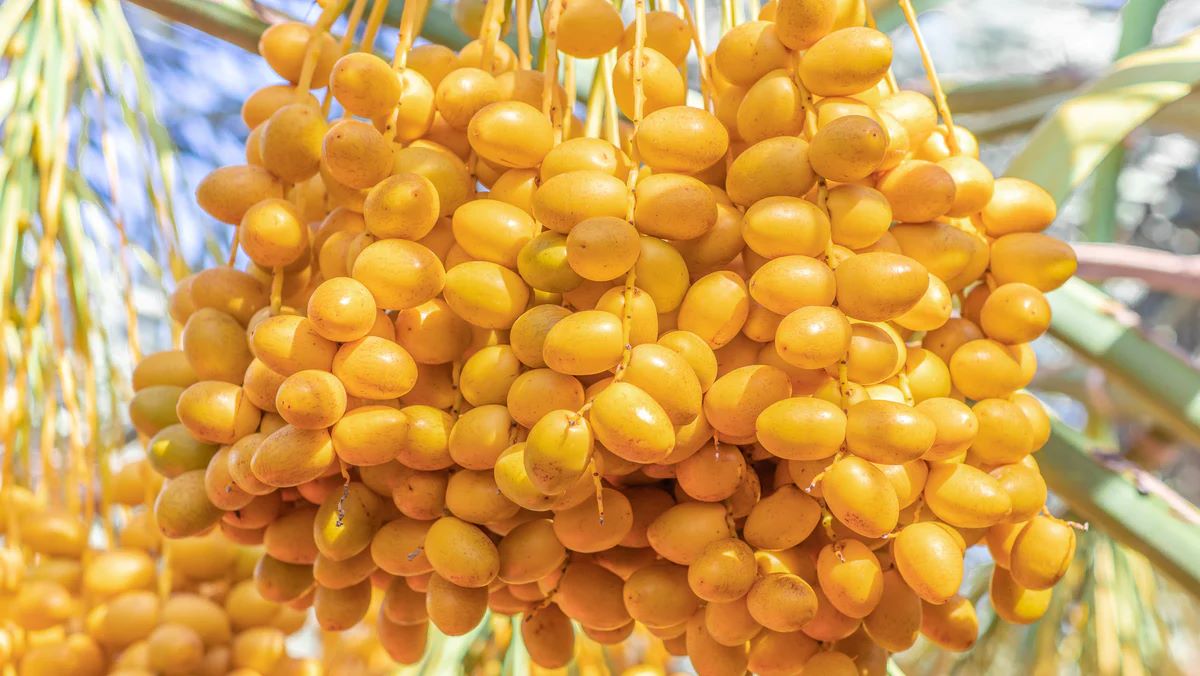
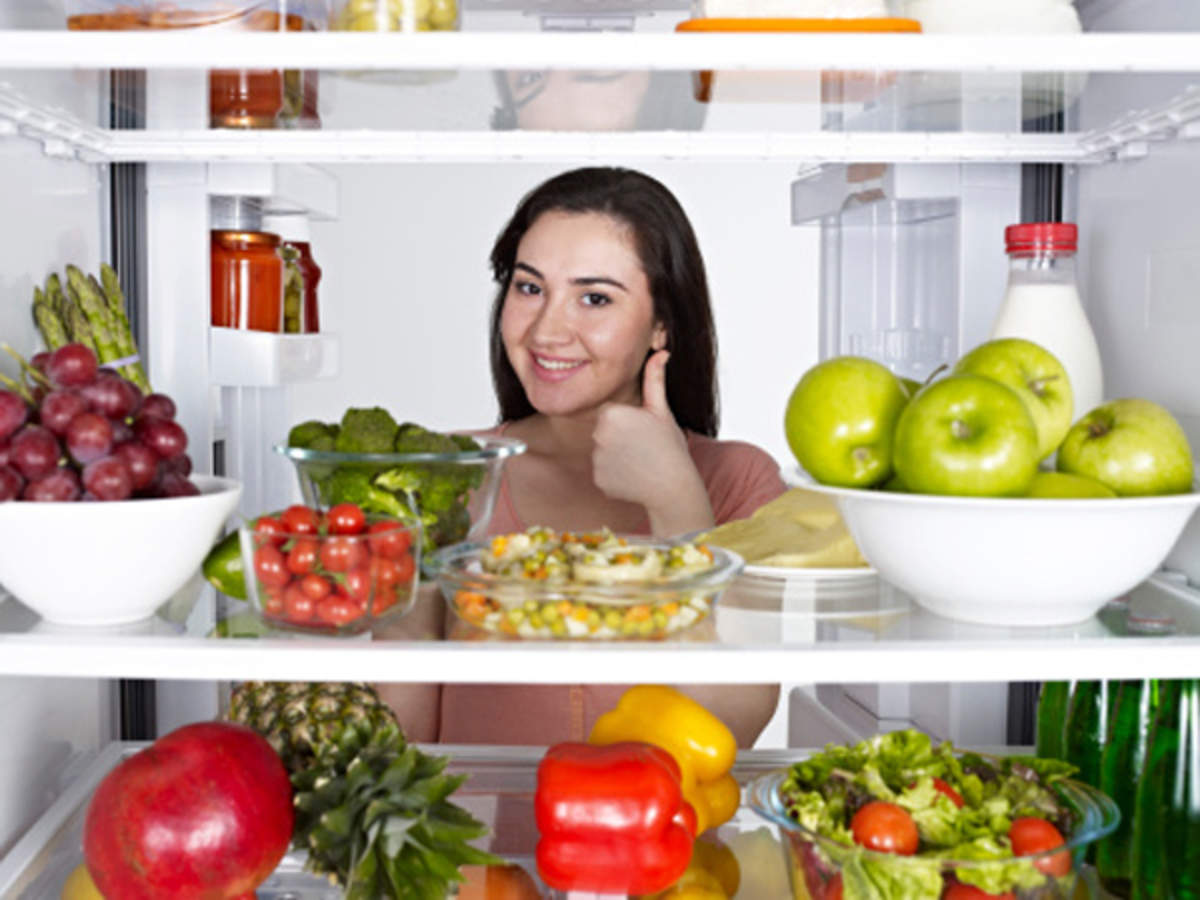
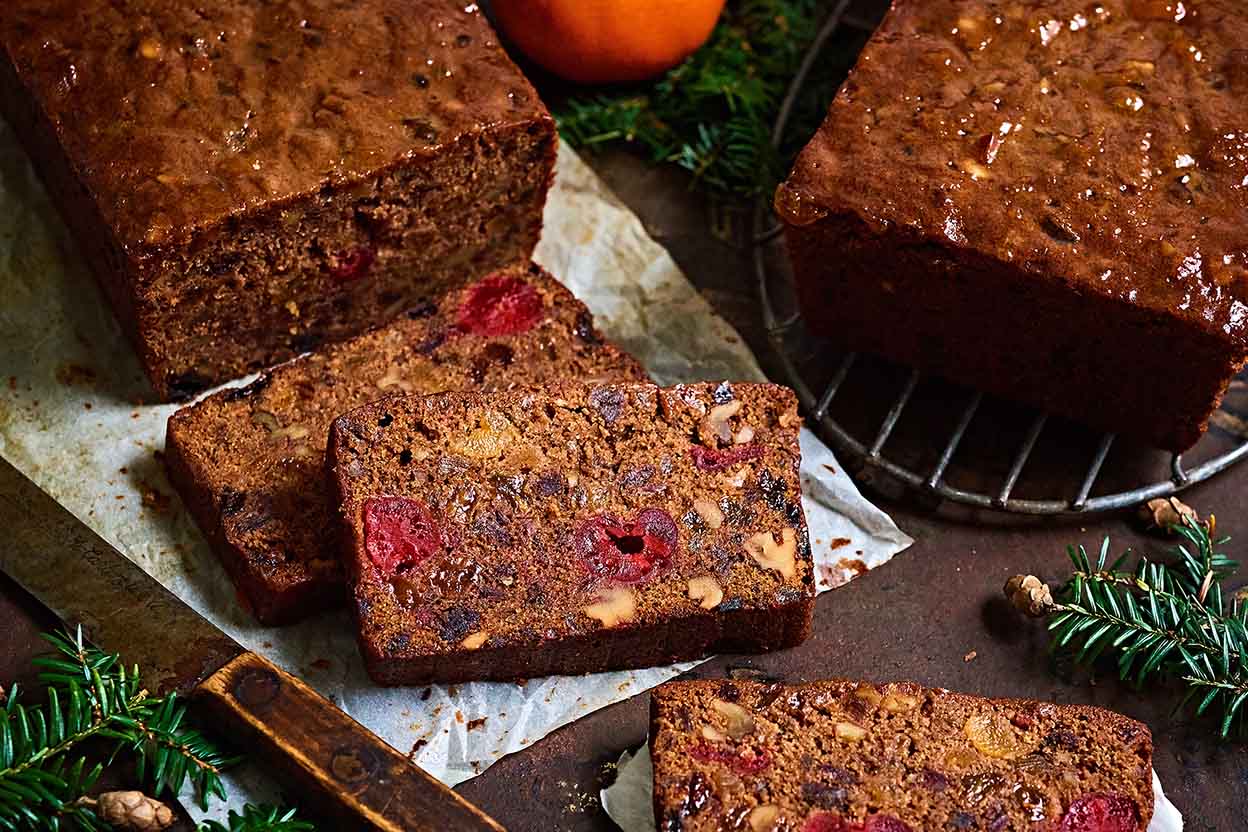
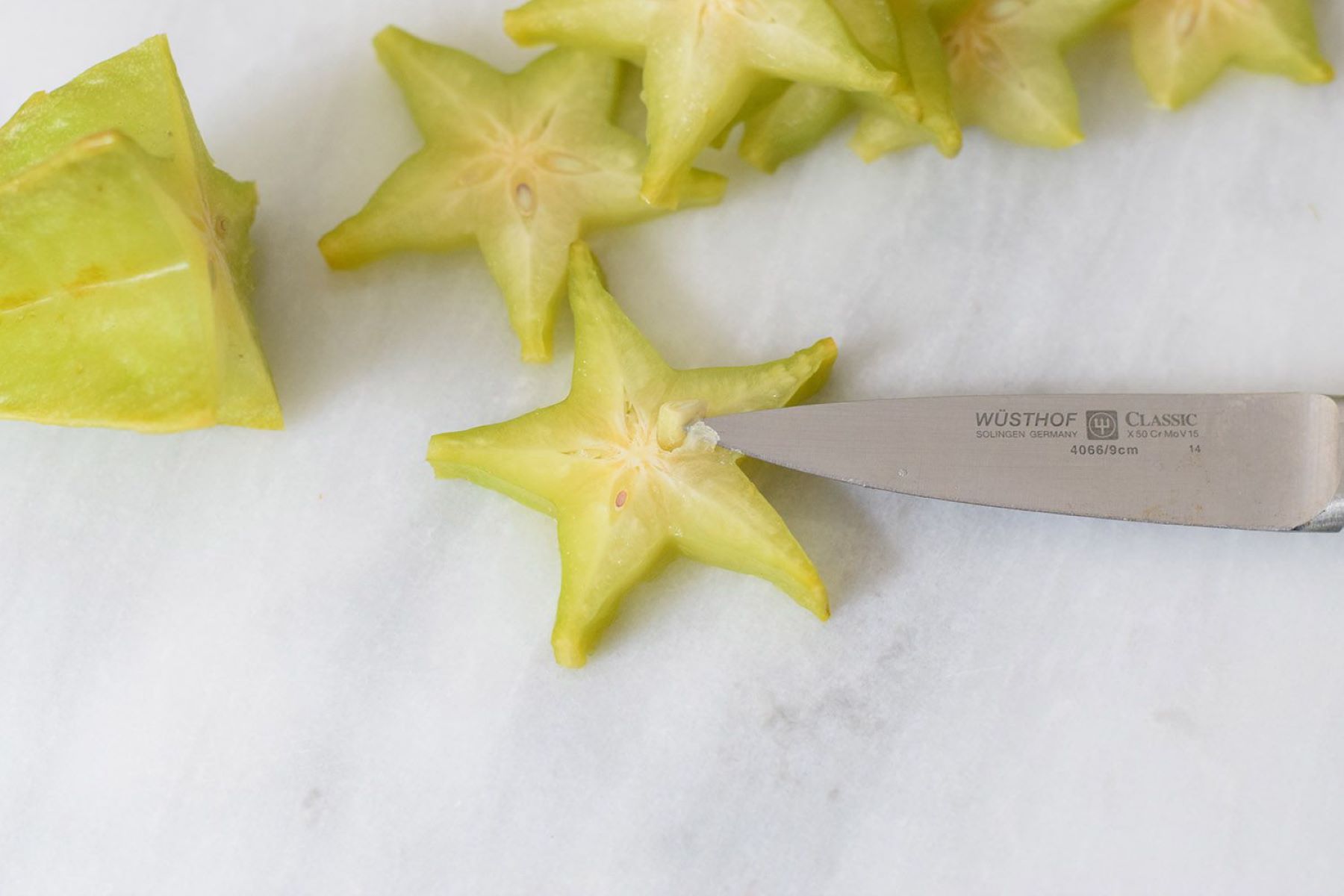
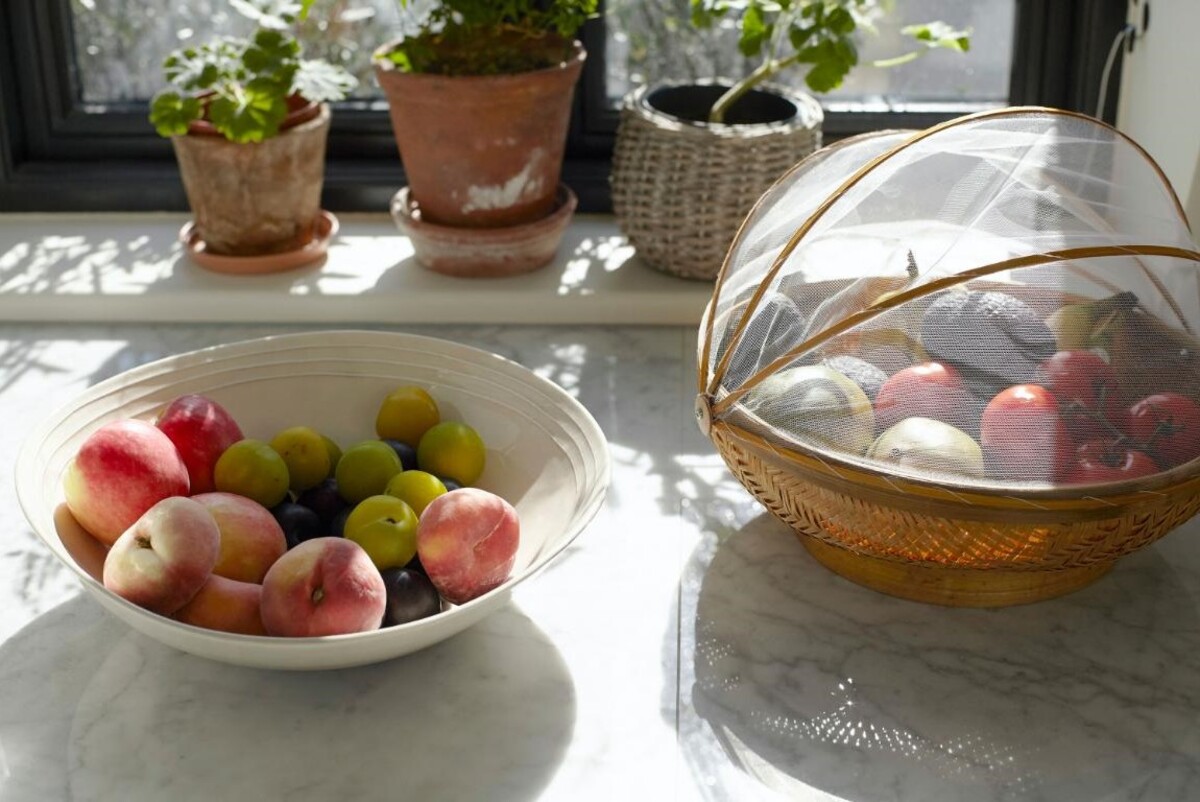
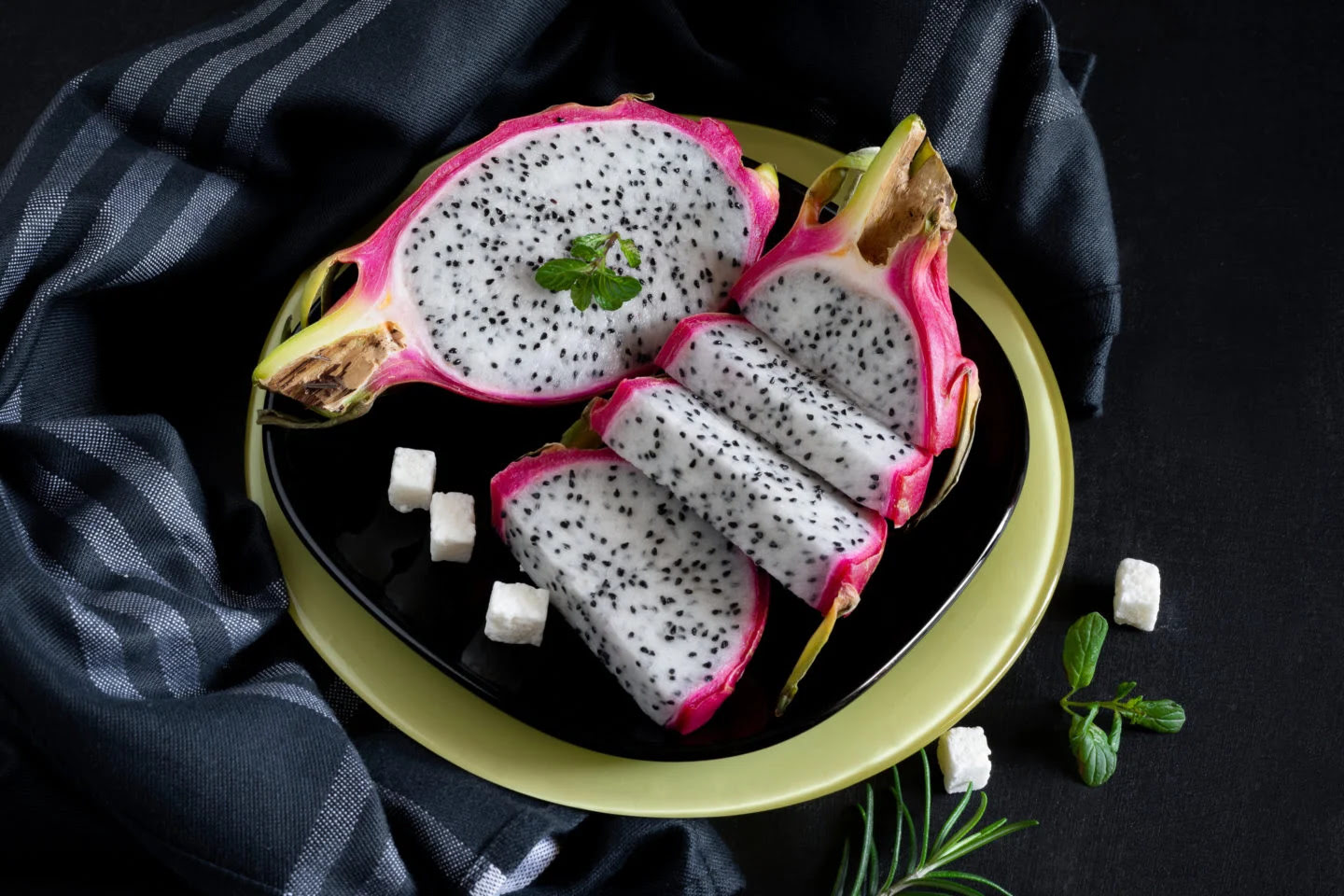
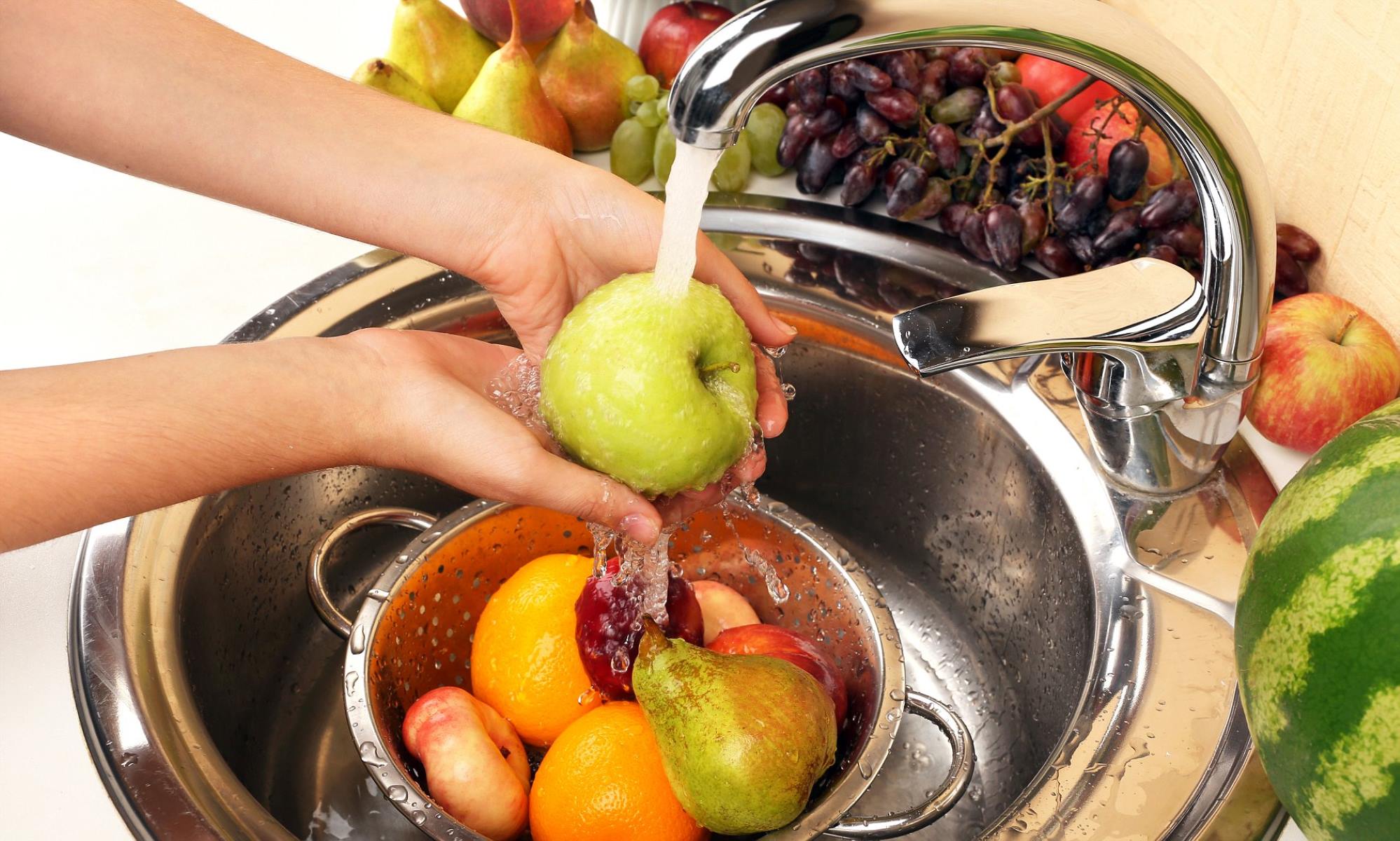
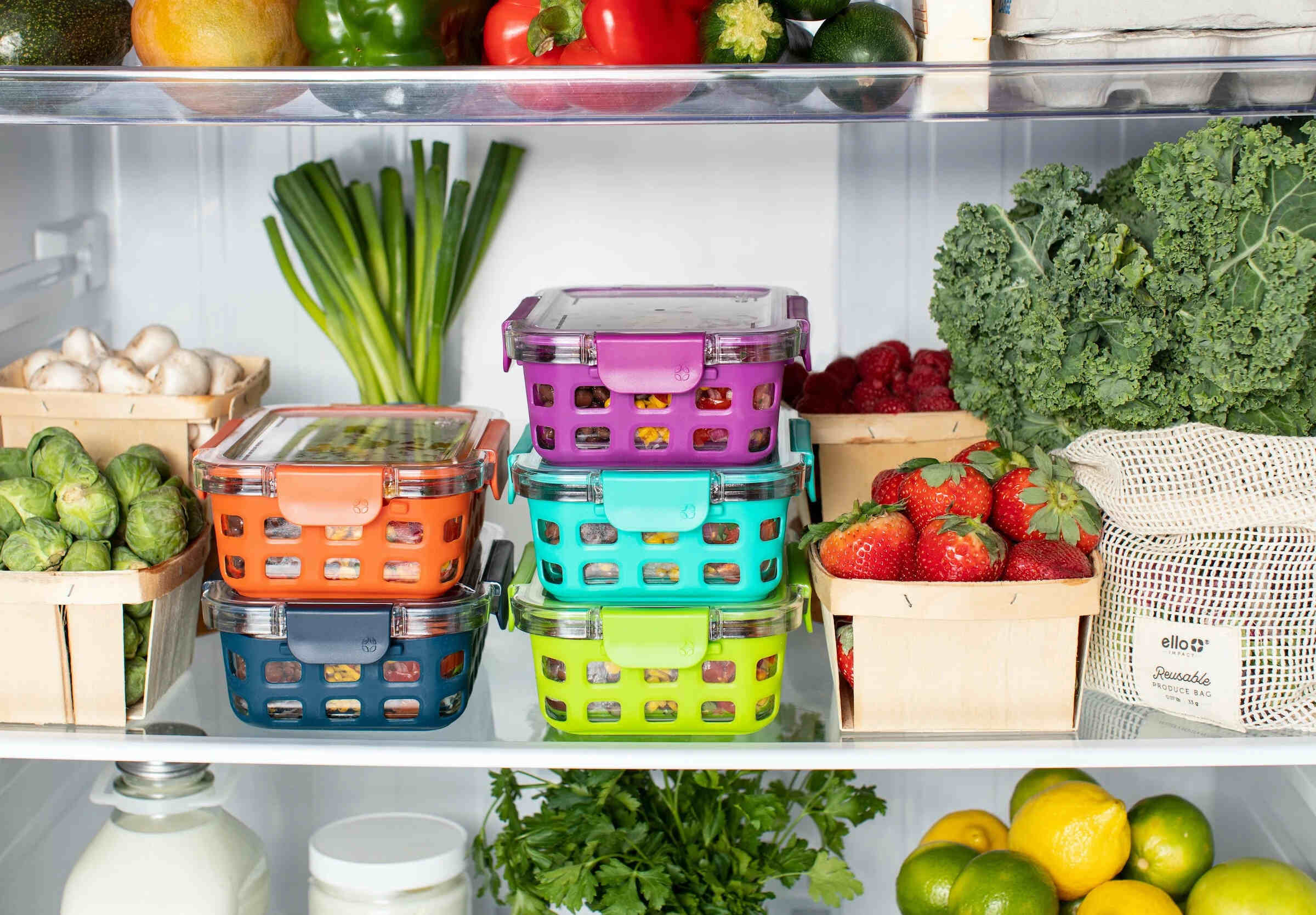
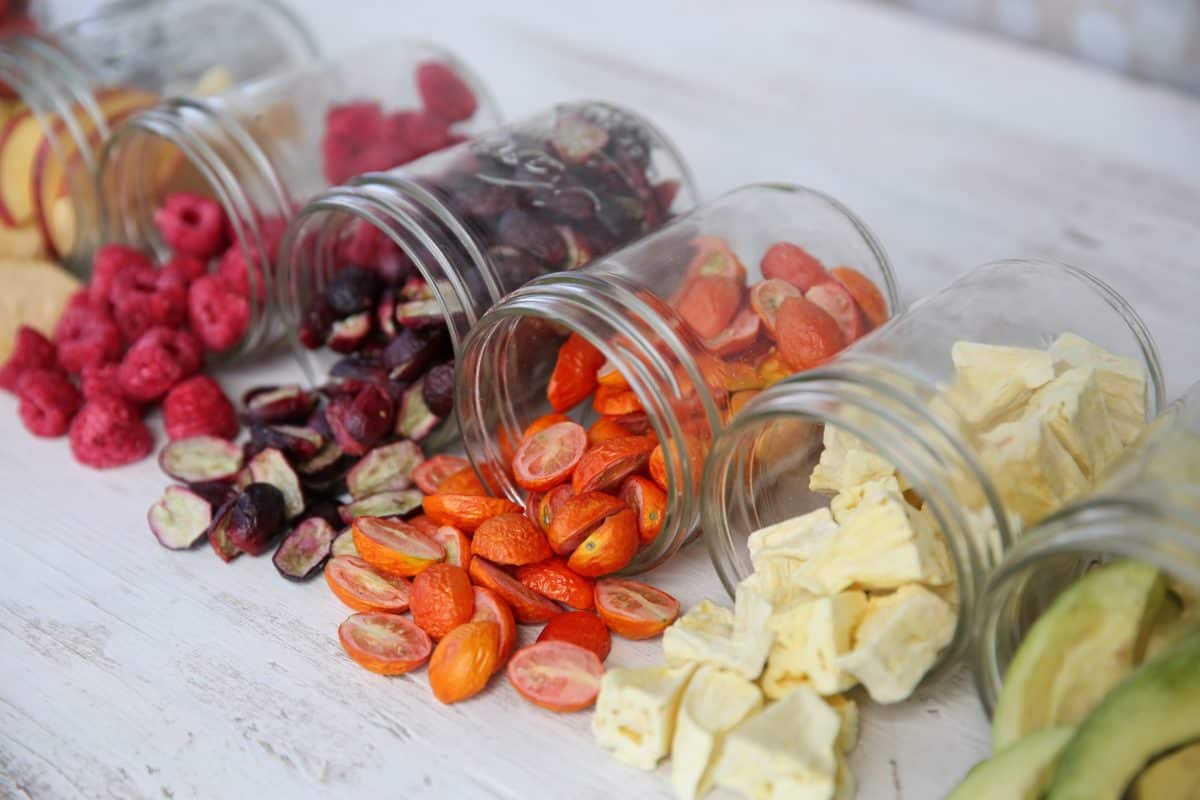
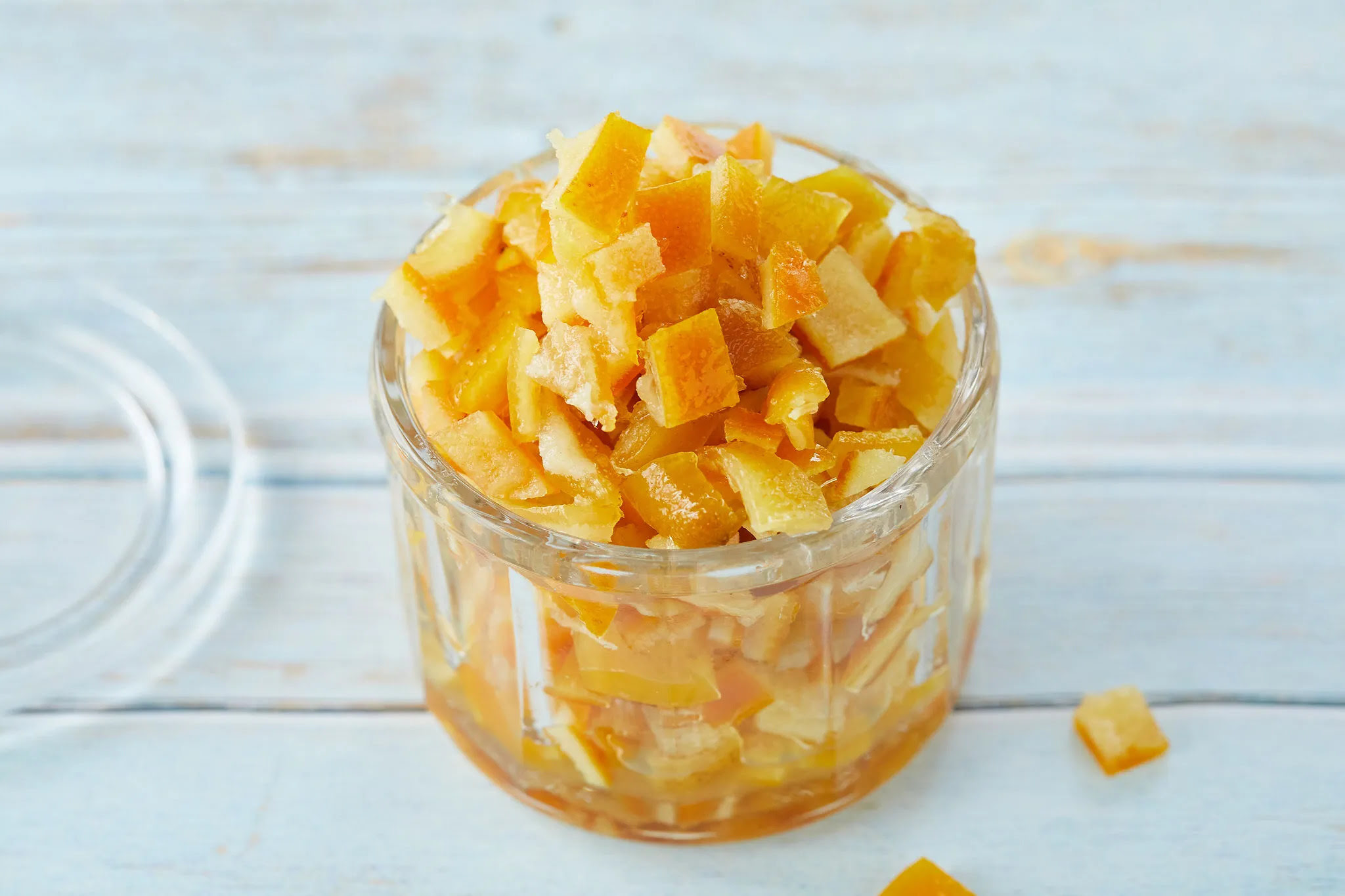
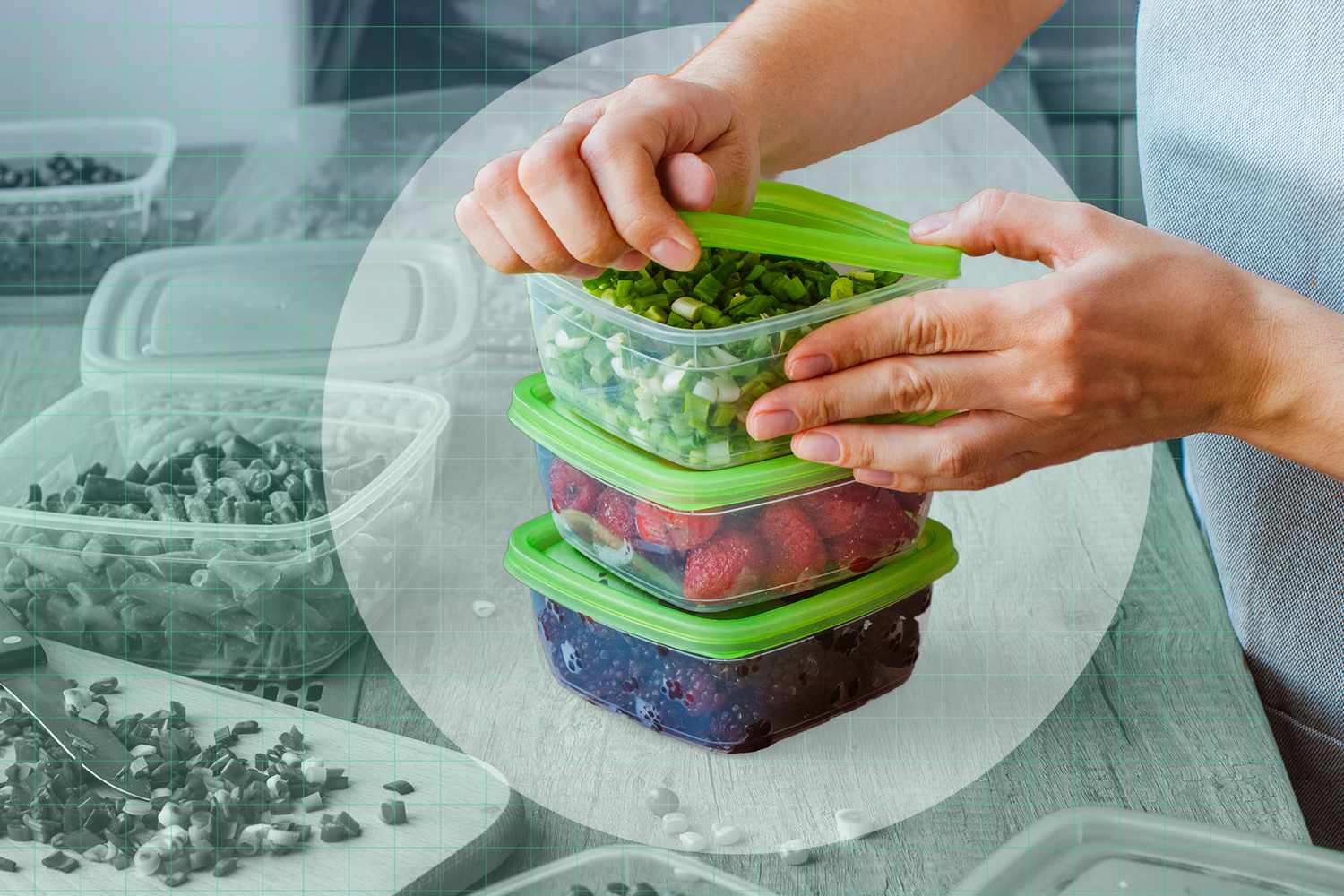

0 thoughts on “How To Store Fruits And Veggies”